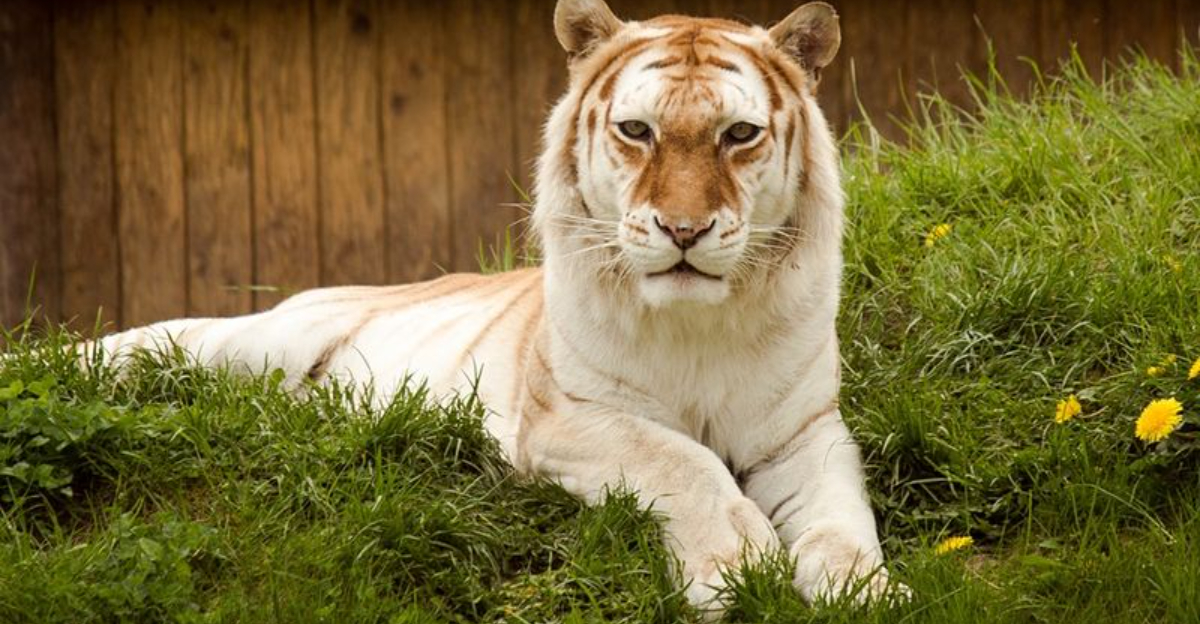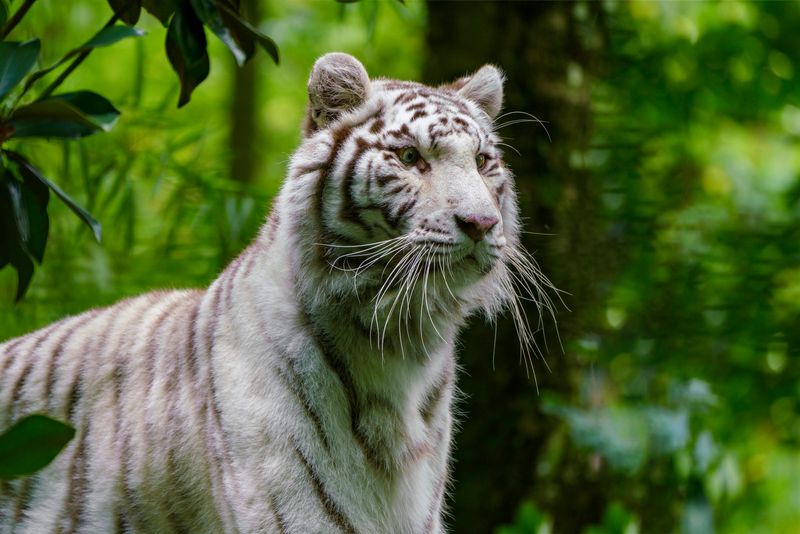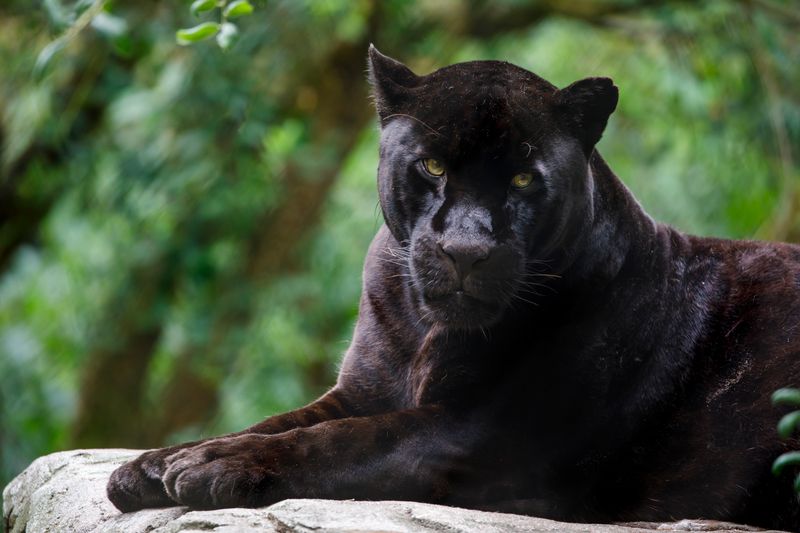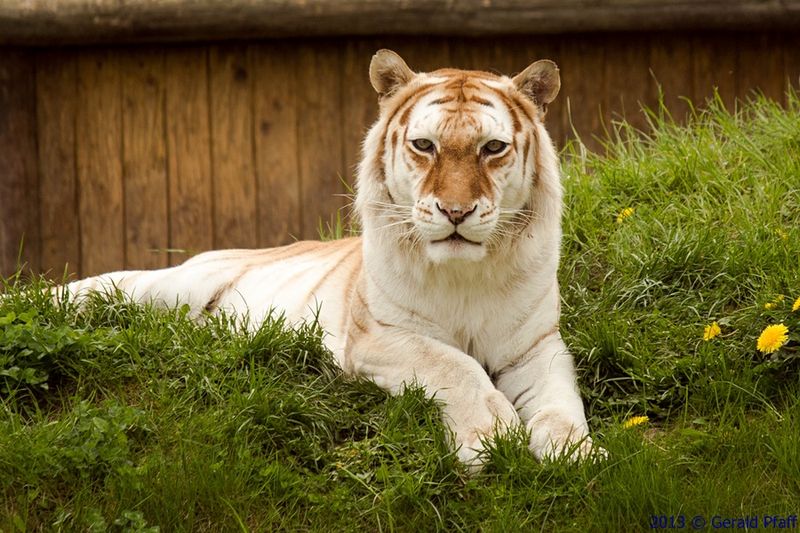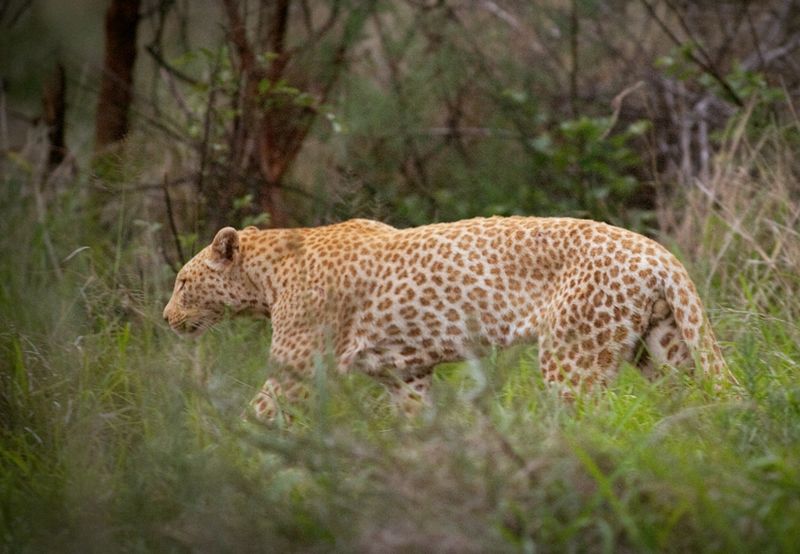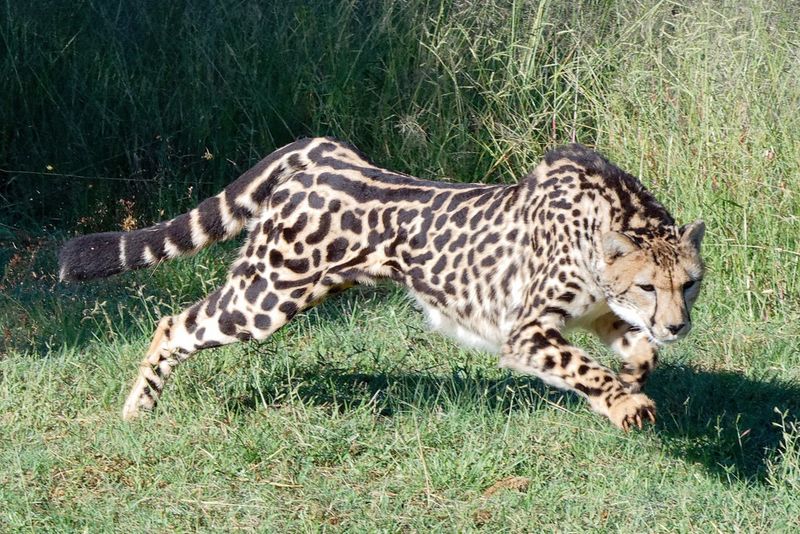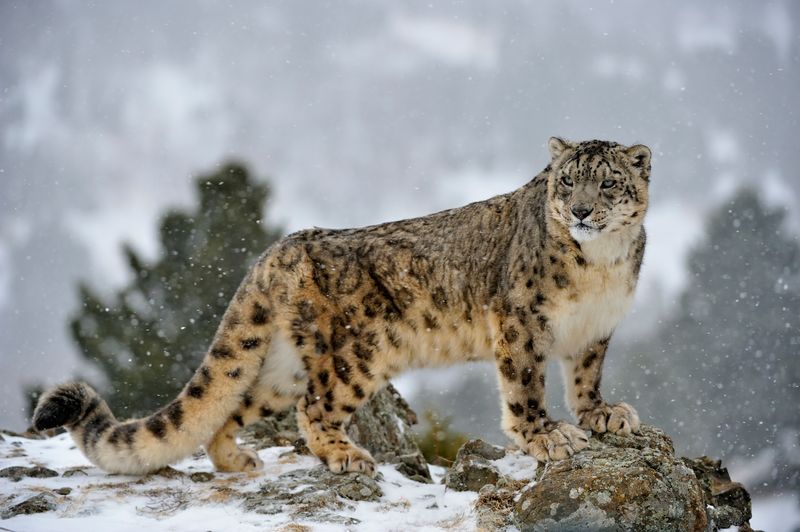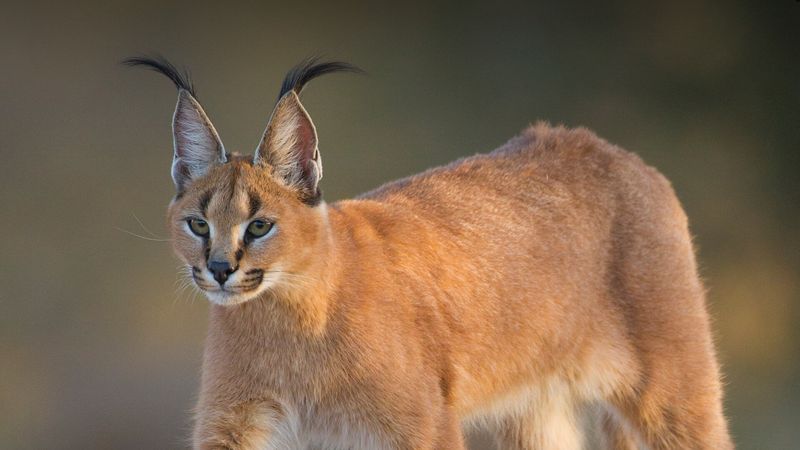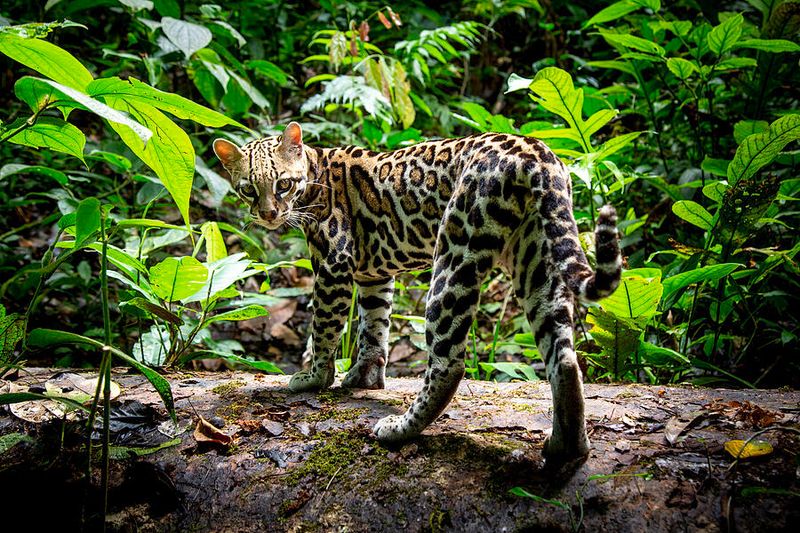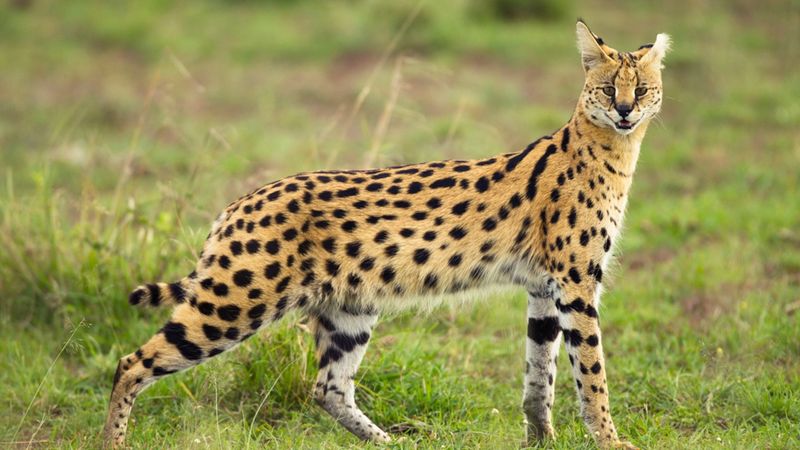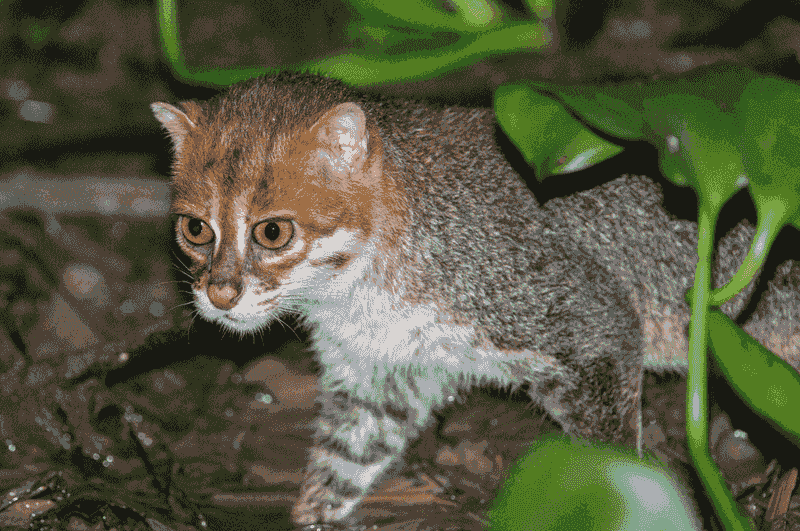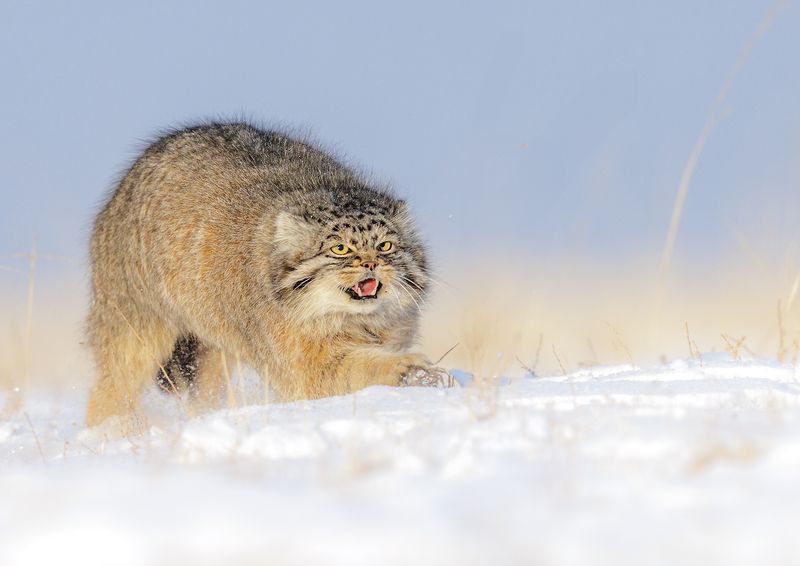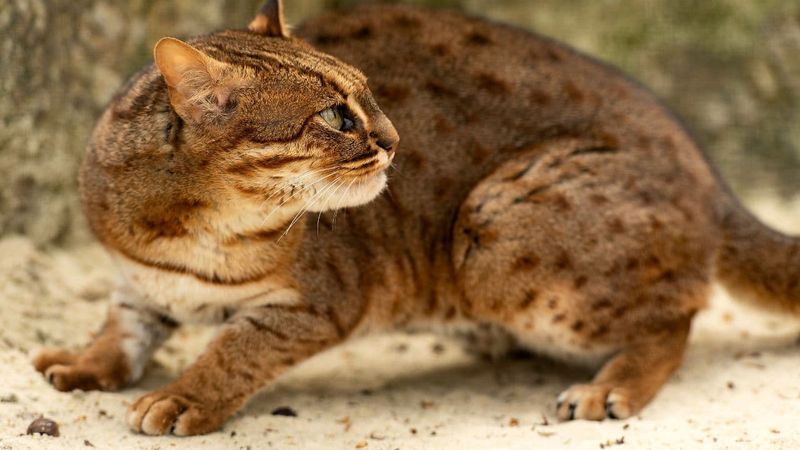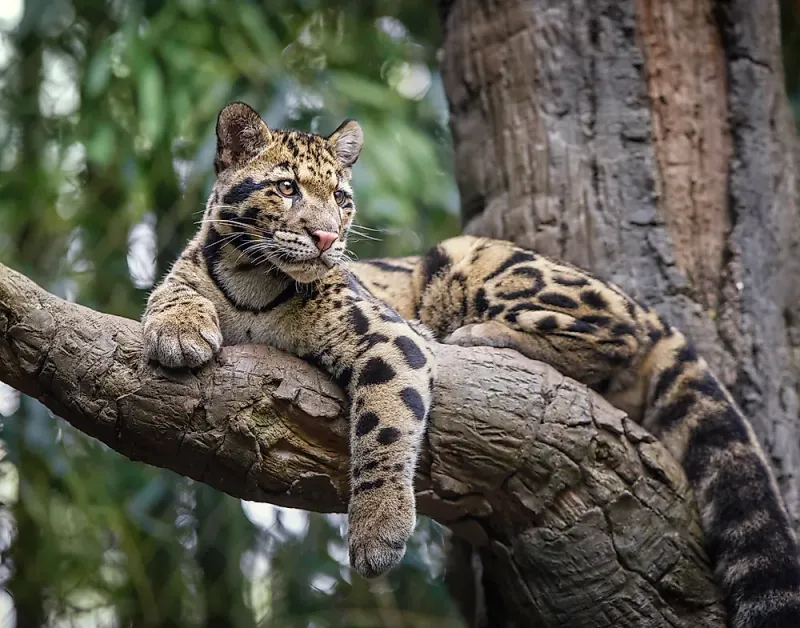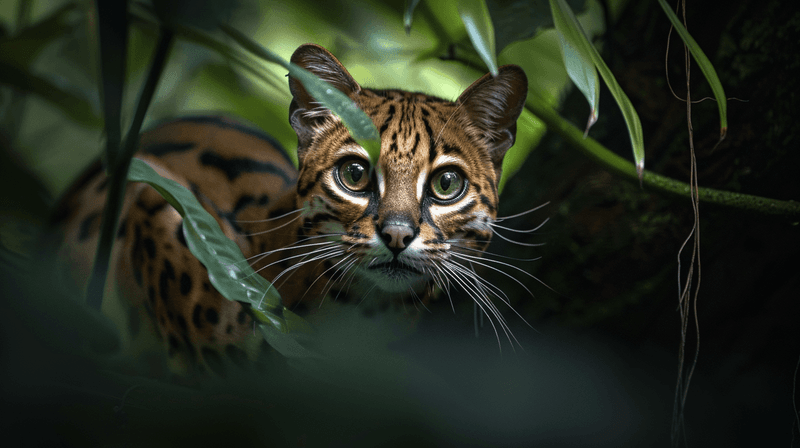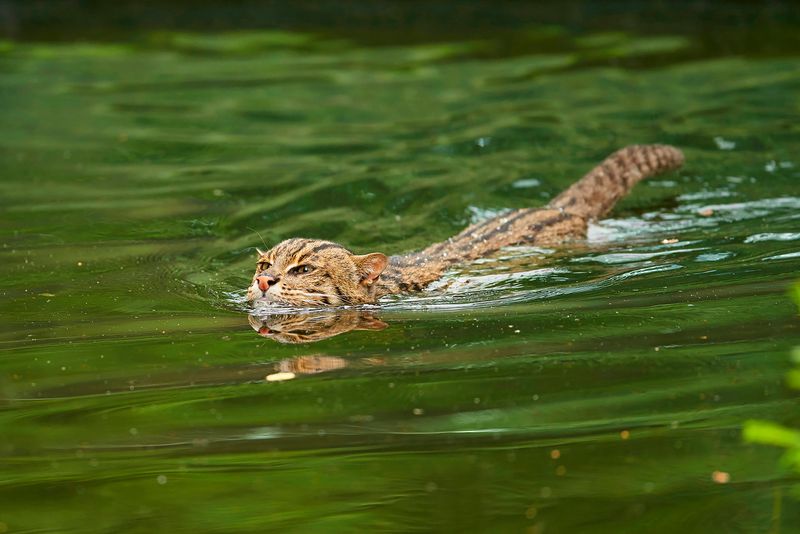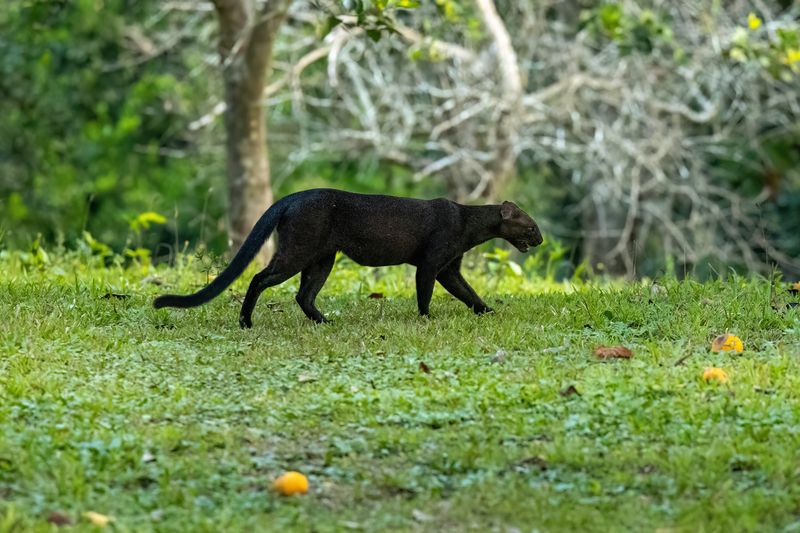📖 Table of Content:
Wild cats exhibit a remarkable array of coat colors and patterns, many of which challenge traditional expectations. Their diverse hues and designs not only capture the eye but also play an essential role in their survival, showcasing nature’s creativity and adaptation. From the snowy white of rare tigers to the deep black of melanistic jaguars, these cats are a testament to nature’s ability to surprise and inspire. This exploration takes us through 16 striking examples of wild cats that defy conventional color palettes, each with its own unique charm and ecological significance.
1. White Tiger
With a coat like moonlit snow, the White Tiger is a rare genetic variant of the Bengal tiger. Its pale, almost ghostly appearance is the result of a recessive gene, presenting an ethereal vision of power and grace. Despite its beauty, this rarity faces challenges in the wild. Under the canopy of dense forests, its black stripes seem to dance across its body as it moves, drawing awe and fascination. Conservationists are captivated by their unique allure, striving to protect and preserve these spectral creatures.
2. Black Jaguar
In the heart of the Amazon, the Black Jaguar moves like a shadow, an embodiment of mystery and power. Known as black panthers, these jaguars exhibit a unique condition called melanism, which cloaks them in a solid black coat. Yet, under certain lights, ghostly rosette patterns emerge, adding an enigmatic layer to their appearance. This dark beauty is both feared and revered, a symbol of the wild’s untamed spirit. In the tapestry of nature, the Black Jaguar is a masterpiece of stealth and elegance.
3. Golden Tiger
The Golden Tiger, a living sunset, captivates with its warm hues and soft stripes. This Bengal tiger variant is a result of a rare genetic mutation, giving it a mesmerizing golden-orange coat. Its beauty is as rare as it is striking, found predominantly in captivity where it is cherished and protected. As sunlight dances on its fur, the golden tiger radiates a serene majesty. Its presence is a reminder of nature’s endless palette and the wonders hidden within the animal kingdom.
4. Strawberry Leopard
With a hue as unexpected as ripe berries, the Strawberry Leopard is a rare gem in South Africa’s wild tapestry. Its pinkish coat, a result of erythrism, sets it apart from its more commonly colored kin. This unique pigmentation adds an enchanting twist to the leopard’s stealth and agility. Perched atop trees or stalking through the grass, its rosy hue blends uniquely with the African dusk. Such distinctive beauty is a testament to nature’s unpredictability and creativity.
5. King Cheetah
A regal anomaly, the King Cheetah stands out with its unusual pattern of elongated spots and stripes. This rare variant of the cheetah, found mainly in southern Africa, owes its unique look to a genetic mutation. As it darts across the savannah, its markings blur into a tapestry of speed and grace. The king cheetah is a living canvas of evolution in action, its rare beauty captivating those fortunate enough to witness its royal dash. It’s a reminder of nature’s unpredictability and richness.
6. Snow Leopard
Silent as the falling snow, the Snow Leopard weaves through the mountain’s icy embrace. Its smoky gray coat, spotted with dark rosettes, provides perfect camouflage against the craggy Himalayan backdrop. This ghost of the mountains moves with an elegance that matches its breathtaking environment. Despite its elusive nature, the snow leopard’s beauty captures the hearts of all who glimpse it. It serves as a powerful symbol of resilience and mystery in one of the world’s most extreme habitats.
7. Caracal
With a pair of tufted ears like antennae, the Caracal is a striking figure in the African wilderness. Known for its agility and precision, this medium-sized wild cat boasts a sleek reddish coat that stands out against the arid landscape. Its graceful movements and sharp gaze speak of a predator finely tuned to its environment. The caracal’s ear tufts, often likened to an artist’s brush, add a creative flair to its already captivating appearance.
8. Ocelot
In the vibrant tangle of Central America’s rainforests, the Ocelot is a masterpiece of camouflage and charm. Its coat, an intricate pattern of spots and stripes, blends seamlessly with the dappled sunlight of the jungle canopy. This small but formidable cat moves with a grace that belies its size, its presence a whisper in the wild. The ocelot’s stunning appearance and elusive nature make it a subject of intrigue and admiration in the world of wild cats.
9. Serval
The Serval, with its long legs and large ears, is an epitome of elegance and efficiency in the African savannah. Its golden coat, sprinkled with black spots, provides excellent camouflage among the tall grasses. This agile hunter uses its keen hearing to locate prey, demonstrating nature’s engineering at its finest. The serval’s distinct appearance and remarkable hunting skills make it a standout in the feline world, admired for both its beauty and its adaptability.
10. Flat-headed Cat
With an unusual name and a unique look, the Flat-headed Cat is a lesser-known marvel of Southeast Asia’s waterways. Its sleek, water-resistant fur and flat skull are perfectly adapted for its aquatic lifestyle. This elusive cat prowls riverbanks, its eyes scanning the water for prey. Despite its small size, the flat-headed cat is a formidable hunter. Its specialized adaptations make it a fascinating study of evolutionary niche-filling and survival in challenging environments.
11. Pallas’s Cat
With a face as round as the moon, Pallas’s Cat is a delightful oddity of the central Asian steppes. Its dense, fluffy coat insulates it against the region’s harsh winters, while its squat body and short legs give it a comically compact appearance. The cat’s grumpy expression adds to its charm, endearing it to animal enthusiasts worldwide. Despite its elusive nature, encountering Pallas’s Cat is akin to discovering a hidden treasure in the rugged wilderness.
12. Rusty-spotted Cat
Small yet mighty, the Rusty-spotted Cat is a diminutive predator that prowls the dense undergrowth of India’s forests. Its reddish coat, speckled with rusty spots, camouflages it perfectly among the leaf litter. Despite being among the smallest of the wild cats, it exhibits a tenacity that defies its size. This feline’s large eyes reflect a world of curiosity and cunning, making the rusty-spotted cat a captivating example of nature’s small wonders.
13. Clouded Leopard
The Clouded Leopard, with its distinctive cloud-like spots, is an arboreal phantom of Southeast Asia’s rainforests. Its long, lithe body is adapted for life among the trees, where it moves with a silent grace. This elusive predator’s striking coat serves as both camouflage and spectacle, a testament to nature’s artistry. As it lounges on high branches, the clouded leopard embodies the mysterious allure of the jungle, a creature both seen and unseen in its leafy kingdom.
14. Margay
High in the canopies of Central and South America, the Margay is an acrobat of remarkable prowess. Its large, expressive eyes and spotted coat are adapted for a life of night-time escapades. Unlike most cats, it can rotate its hind legs to climb headfirst down trees, a skill that sets it apart in the animal kingdom. The margay’s agility and charm make it a fascinating subject of study for those intrigued by the mysteries of the wild.
15. Fishing Cat
With paws designed for aquatic precision, the Fishing Cat is a testament to nature’s ingenuity. Found near the swamps and rivers of South Asia, this cat’s partially webbed feet make it an adept swimmer and hunter. Its spotted coat offers camouflage among the reeds, while its stocky build aids in diving. Observing the fishing cat in action is witnessing evolution’s craftsmanship, as it patiently waits and pounces with unerring accuracy on unsuspecting fish.
16. Jaguarundi
The Jaguarundi, with its elongated form and sleek, uniform coat, is a stealthy figure in the tropical underbrush. Its appearance, more akin to an otter than a typical cat, allows it to move with ease through dense vegetation. This versatile hunter is as comfortable climbing trees as it is stalking through the grass, showcasing its adaptability. The jaguarundi’s unique physique and behavior make it a captivating example of the diversity within the feline family.
